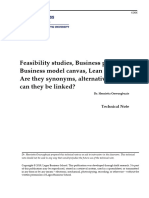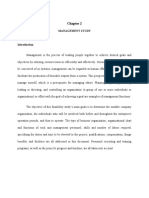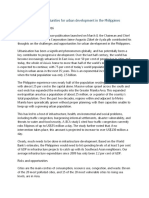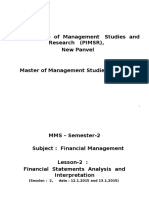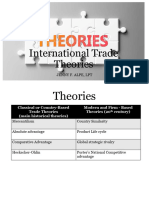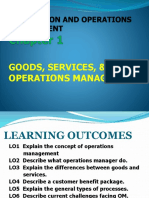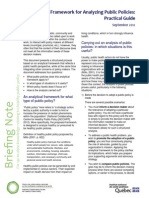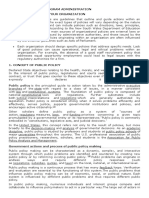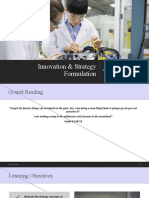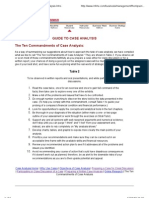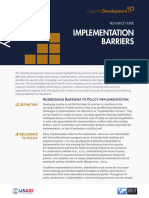0% found this document useful (0 votes)
70 views6 pagesAddressing Barriers To Policy Implementation
This document discusses addressing barriers to policy implementation. It defines implementation barriers as challenges that can be rooted in opposition from stakeholders, inadequate resources, lack of clarity on guidelines or roles, conflicts with other policies, or lack of coordination or political will. Overcoming barriers requires understanding their underlying causes and developing targeted strategies. Key capabilities include understanding the policy environment, assessing barriers, crafting solutions, and ensuring stakeholders are committed to addressing challenges over time. High capacity involves identifying barriers through feedback, advocating for solutions, and regularly reviewing policies to integrate lessons learned.
Uploaded by
অনিন্দ্য বন্দ্যোপাধ্যায়Copyright
© © All Rights Reserved
We take content rights seriously. If you suspect this is your content, claim it here.
Available Formats
Download as PDF, TXT or read online on Scribd
0% found this document useful (0 votes)
70 views6 pagesAddressing Barriers To Policy Implementation
This document discusses addressing barriers to policy implementation. It defines implementation barriers as challenges that can be rooted in opposition from stakeholders, inadequate resources, lack of clarity on guidelines or roles, conflicts with other policies, or lack of coordination or political will. Overcoming barriers requires understanding their underlying causes and developing targeted strategies. Key capabilities include understanding the policy environment, assessing barriers, crafting solutions, and ensuring stakeholders are committed to addressing challenges over time. High capacity involves identifying barriers through feedback, advocating for solutions, and regularly reviewing policies to integrate lessons learned.
Uploaded by
অনিন্দ্য বন্দ্যোপাধ্যায়Copyright
© © All Rights Reserved
We take content rights seriously. If you suspect this is your content, claim it here.
Available Formats
Download as PDF, TXT or read online on Scribd
/ 6


